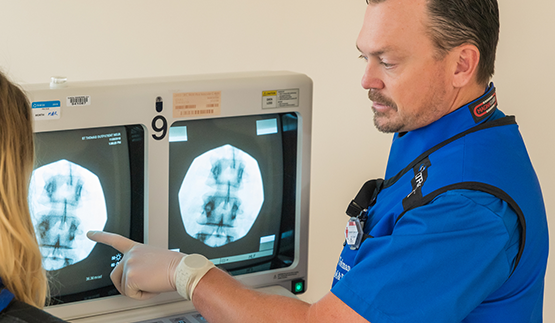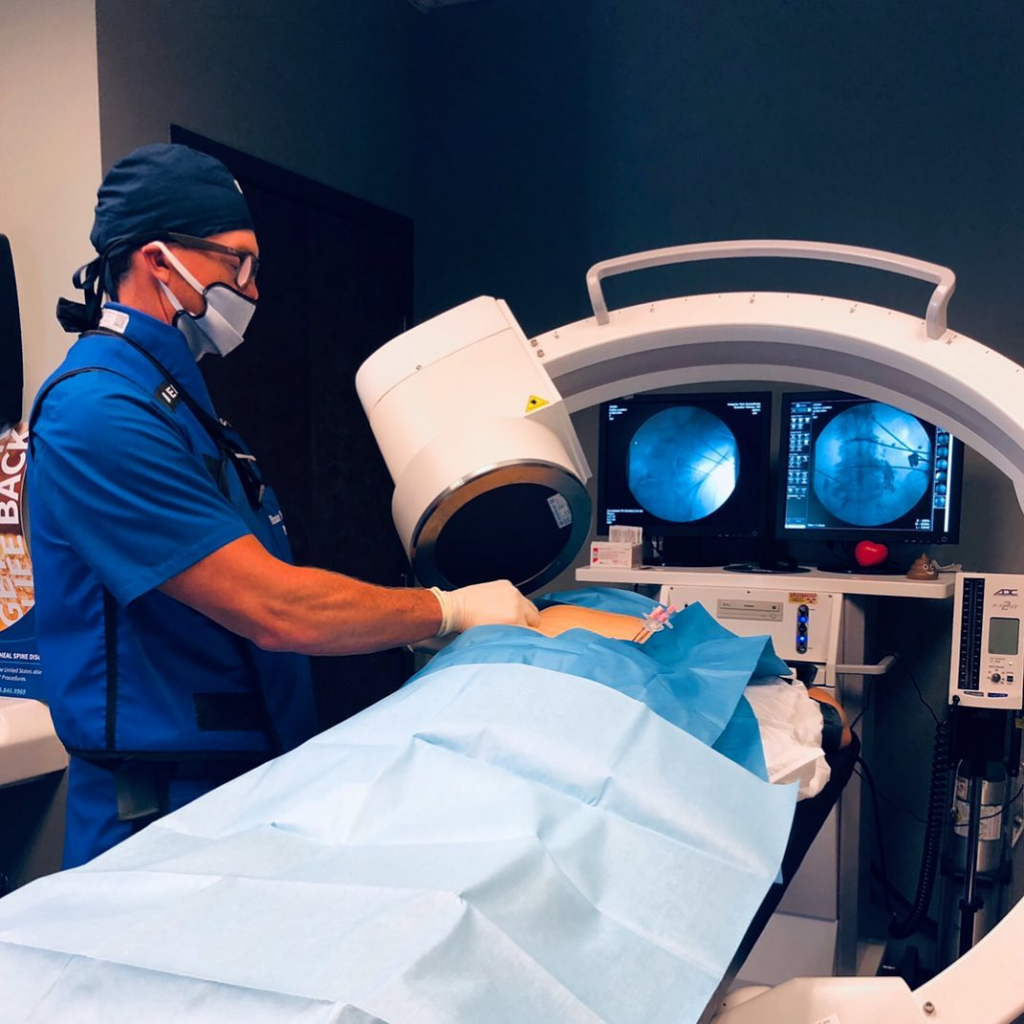The Discseel® Procedure
The Discseel Procedure has 4 steps to ensure full transparency between Dr. Tolman and you.
Get A Consultation
During the in-person consultation process for the Discseel Procedure, you are talking directly to Dr. Tolman where you will discuss your pain symptoms, previous tests you have had, procedures you’ve had and your goals. This is the time to be honest and get the answers that other doctors haven’t been able to provide. When pain starts to interfere with your sleep, goals or activities, it is time to take action! We identify the source of your pain and treat it.


Have An Annulogram Performed
There are many spine specialists who recommend spinal fusions without performing an annulogram because they lack the insight. By not performing an annulogram, you are jeopardizing your long-term relief and your health. An annulogram is the best test to evaluate if your disc is torn or damaged. Many MRI’s will miss certain disc damage but during the annulogram, a water-soluble contrast is injected into your disc, which identifies all disc tears. Once all damages are identified, Dr. Tolman can start making a plan and start the Discseel Procedure.
Receive Treatment
The Discseel Procedure takes approximately 45 minutes and is performed in an out-patient facility. During the procedure, Dr. Tolman injects an orthobiologic into your damaged discs. When this orthobiologic is introduced to the damaged disc, it will seal the disc and allow for tissue growth. The Discseel Procedure is performed with live x-rays.

Up And Moving Within 24 Hours
The recovery process is simple and fast. After the Discseel Procedure, most patients are walking in the next 24 hours. You may experience mild and temporary discomfort, which is to be expected and is normal. The second Dr. Tolman injects the orthobiologic into the damaged disc and your disc is sealed, the healing process begins. The damaged disc’s tissue will continue to grow for the next 12 months. On day two, you can start walking, while avoiding bending and twisting. After this, we encourage a gradual progression in duration and distance of walking as you feel better. Post-op instructions will be provided on the day of the procedure.



